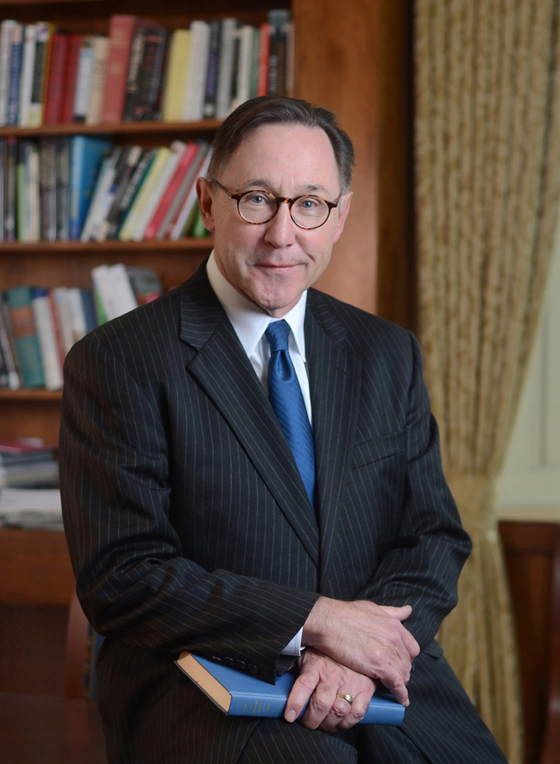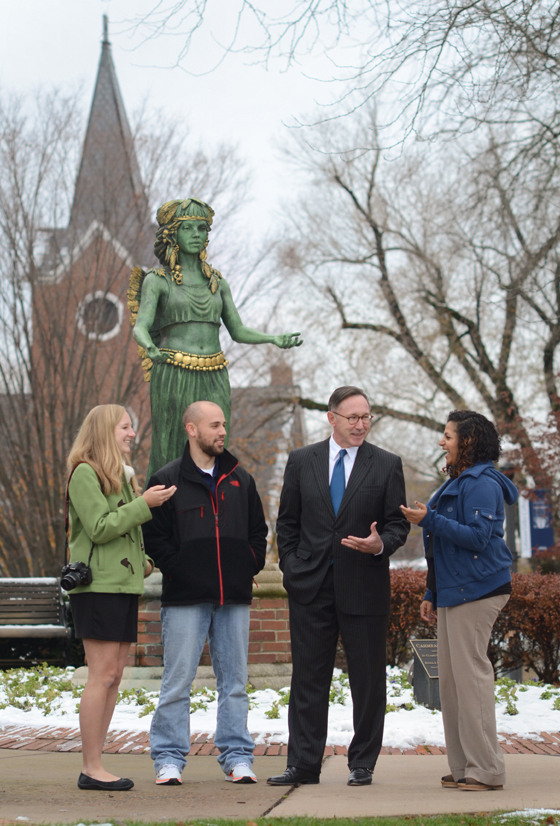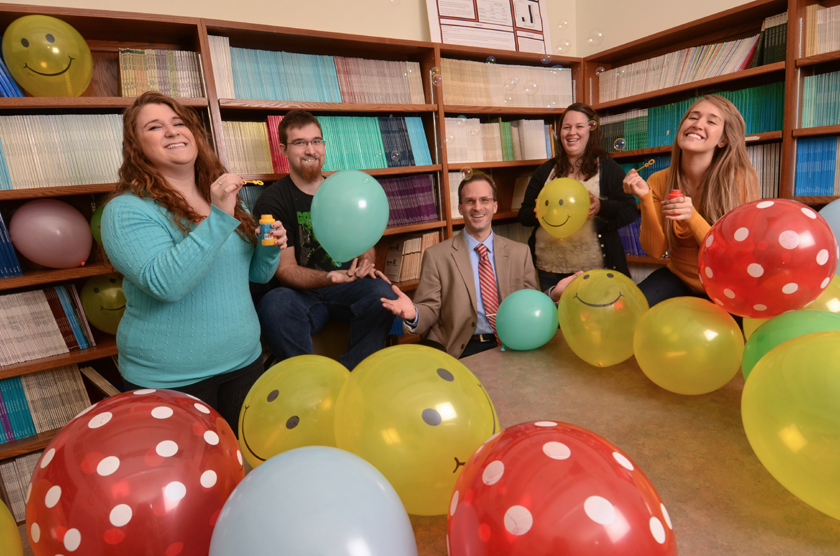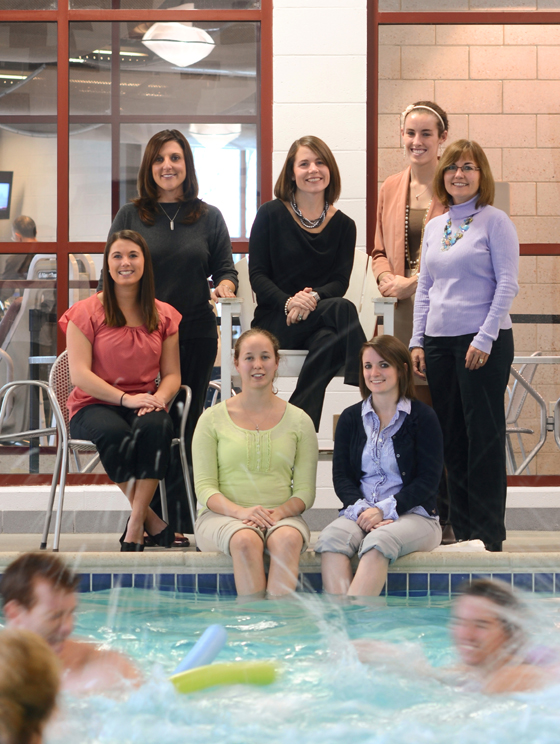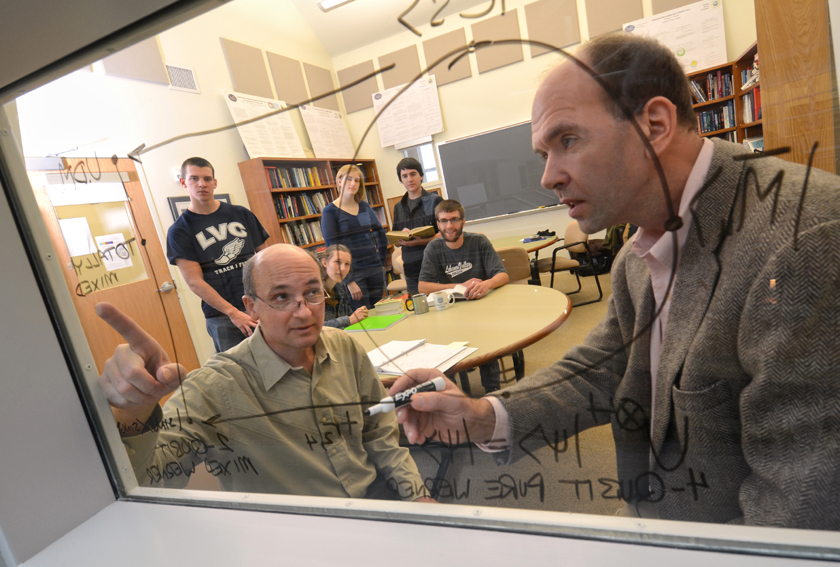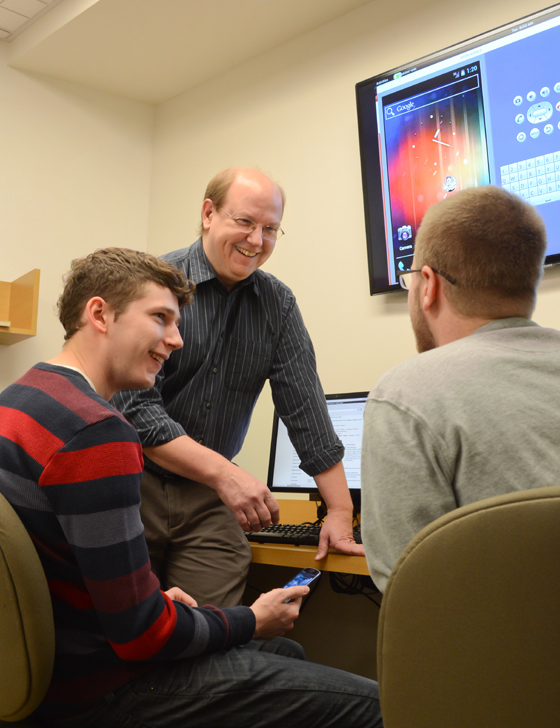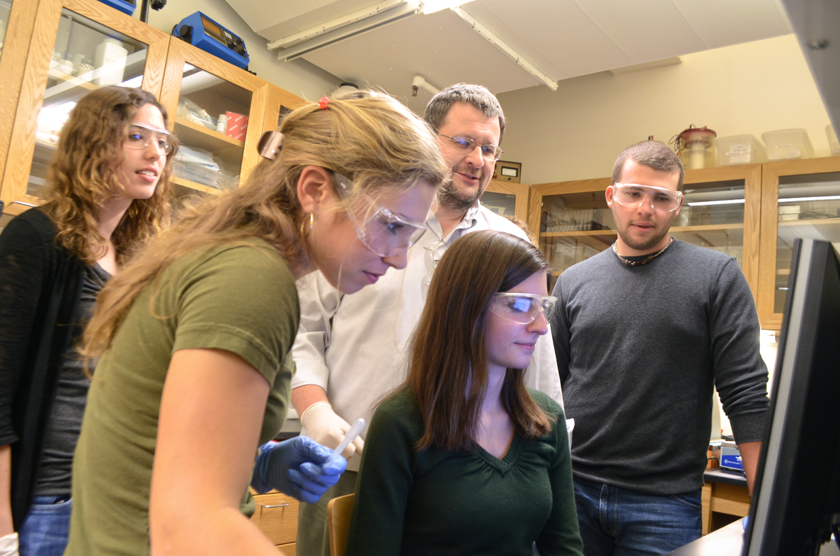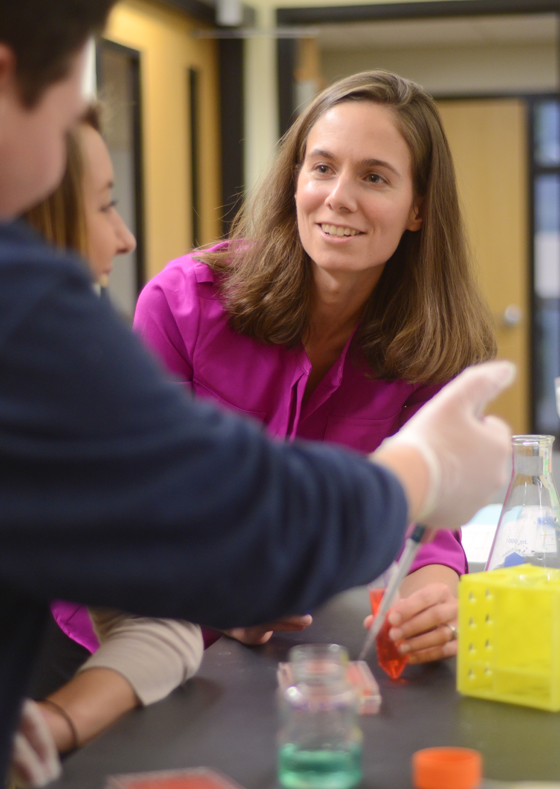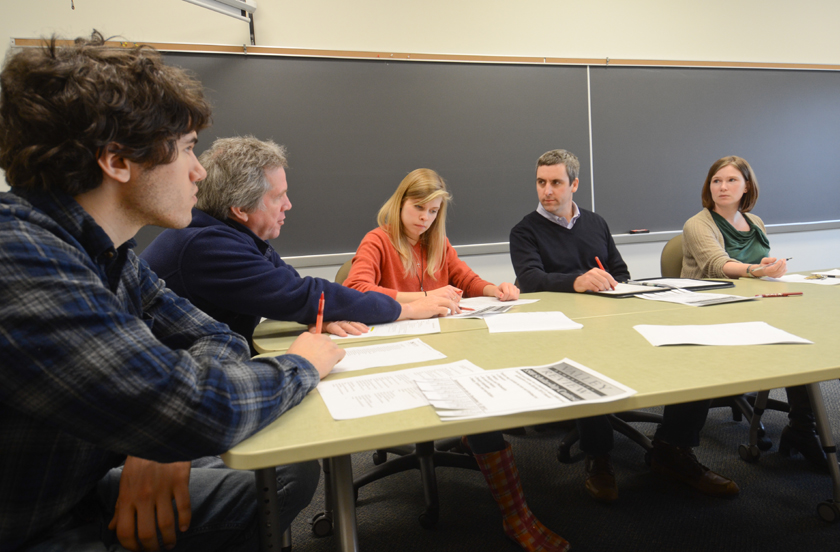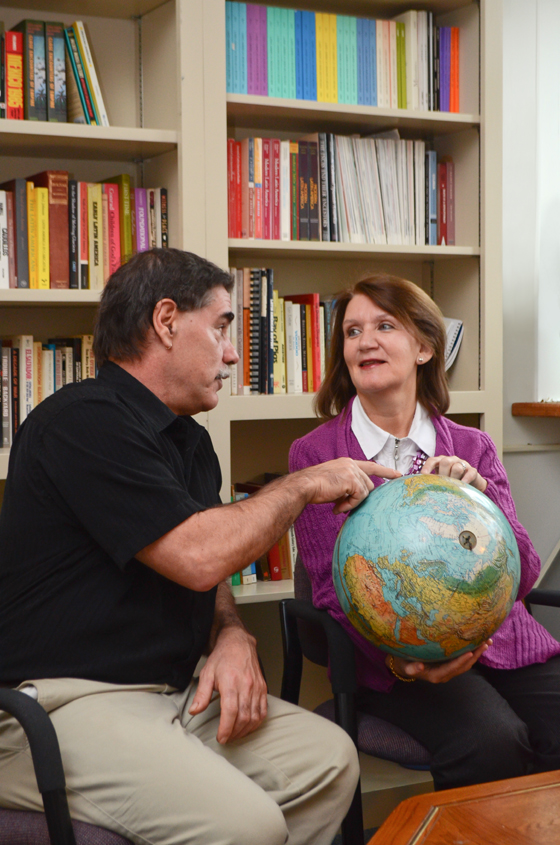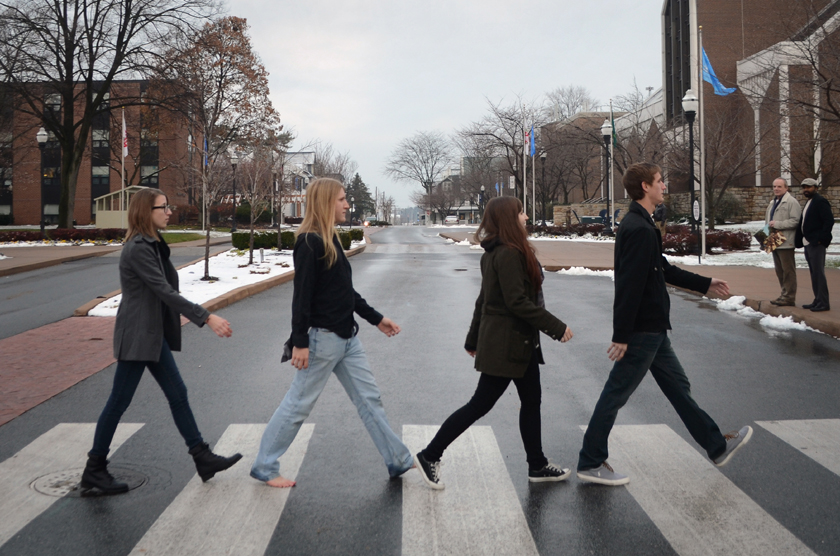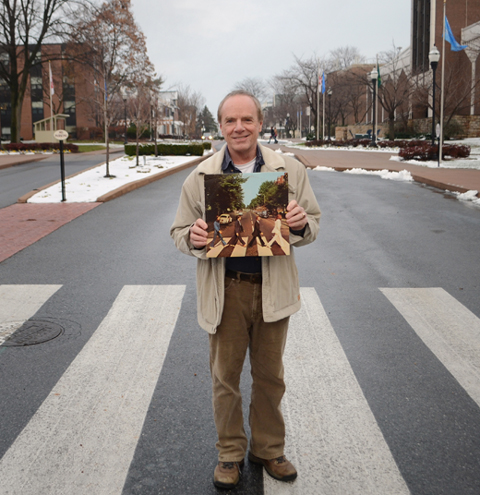Over 20 years ago I did my first photo shoot for Lebanon Valley College. In the time since I’ve probably made more photographs for LVC than any other client. With the addition of Bishop Library, the incredible Arnold Sports Center, the Peace Garden and the current Mund College Center expansion I’ve watched the campus grow more beautiful over the years. With the appointment of a new president it’s an honor now to have photographed for Lebanon Valley College under four administrations.
This year’s president’s report focuses on LVC’s interdisciplinary programs, and gave me another opportunity to breathe in the vitality of a terrific educational institution, and to “exhale” a few worthy images in return. One of my primary jobs this time also was to make a portrait of the new president, Dr. Lewis E. Thayne.
Dr. Thayne is a man with many demands on his time. While waiting to meet with him I noticed a constant flow of people into his office suite hoping for a moment with him – which made me even more aware of the importance of making our brief time together productive as possible.
An aside on coherent lighting
I’ll have more to say on the topic of coherent lighting in another post. But this assignment illustrated the need for understanding how light behaves (or doesn’t) and the limitations of digital cameras. Some digital shooters believe if they can master all the functions of their DSLR camera they can make any kind of photo well. Sadly this is not so. In portraiture and many other kinds of photography the quality and direction of light are equally important as its color, or white balance. These are key components of what I call coherent lighting, and they apply to all photography: digital, film, still photography and video. (Strictly speaking coherent light means all light waves are in phase, as with laser light – but I’m using layman’s terms here.)
My general college photography now is done now with available light and digital cameras. But there are times when available light is not adequate, and it’s essential to override it in a pleasing, naturalistic manner. A camera’s built-in flash or a shoe-mounted flash can’t do that. In this case, Dr. Thayne’s venerable office provided a mix of daylight through large windows and old fluorescent fixtures overhead. Neither source was appropriate for the kind of portrait we needed.
Fortunately I had anticipated this and had an ample light kit with me. My first priority was to find a spot that offered an appropriate backdrop. After he approved my choice I quickly set up an impromptu studio, adjusted the ratio of main and secondary lights and metered my flash while he was able to continue working. Then I had him move into position for the actual photography without wasting his time.
There was no second guessing anything, and I was grateful to learn later that Dr. Thayne was pleased with the result. Below is the image that was chosen for publication, followed by a sampling of other photos I made around the campus for the report (more can be seen on LVC’s website). As always there were challenges to overcome but most of all we had fun making these. Many kudos to LVC’s editorial staff headed by Tom Hanrahan and to designer Tom Castanzo (Afire Creative Group) for their excellent work in conceiving and making this piece. It’s always a pleasure working with them.
